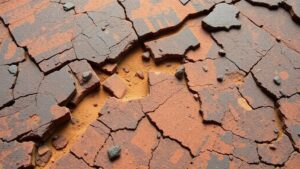The Discovery of Nevada’s Eureka District and Its Rich Silver Ores
The Discovery of Nevada’s Eureka District and Its Rich Silver Ores
The Eureka District, located in central Nevada, is renowned for its rich deposits of silver, which significantly impacted both the local economy and the broader mining landscape of the United States during the late 19th century. This article delves into the discovery of the Eureka District, the exploration and mining of silver ores, and the implications of its wealth on regional development.
The Historical Context of Discovery
The discovery of the Eureka District in 1864 came during a time of expansive westward movement and exploration in America. The Comstock Lode, discovered in 1859 in Virginia City, Nevada, had already set off a silver rush that put Nevada on the mining map. Prospectors, motivated by the promise of wealth, began searching for untapped mineral deposits across the region.
John T. Sain, a hardworking prospector, initially stumbled upon the rich ore veins in the Eureka District. His discovery, fueled by serendipity, attracted more prospectors and mining companies to the area, culminating in a significant influx of settlers and miners alike.
The Geology of the Eureka District
Understanding the geological composition of the Eureka District is crucial to appreciating its rich silver deposits. area is primarily composed of Paleozoic sedimentary rocks that have undergone metamorphism. This unique geological framework created ideal conditions for the formation of high-grade silver ores.
Analyses have shown that the regions predominant ore mineral is argentite (Ag2S), which formed in hydrothermal veins. These veins typically measure from several inches to feet in width and extend thousands of feet deep, providing substantial quantities of silver that were economically viable to mine.
The extraction of silver from the Eureka District utilized various mining techniques that evolved over time. Initially, prospectors relied on simple placer mining through panning and sluicing. But, as the demand for silver surged, more sophisticated methods were developed, particularly shaft mining and later, mechanized methods.
- Shaft Mining: This technique involves digging vertical shafts to access deeper ore veins. The Eureka Districts underground networks extended over 200 miles by the late 1800s, exemplifying the scale of operations.
- Mechanical Methods: By the turn of the century, companies began employing steam-powered drills and hoisting systems to improve efficiency and productivity.
By the early 1900s, the Eureka District had produced over $60 million in silver and lead ores, contributing significantly to the economic vitality of Nevada and the United States.
The Impact on the Local Economy
The wealth generated by the Eureka District transformed not only the local economy but also the social structure of the region. Towns such as Eureka and Ruby Hill sprang up, providing housing, commerce, and leisure activities for workers and their families.
Statistical data indicate that by 1880, Eurekas population had grown to nearly 3,000 residents, fueled by the influx of miners and their families. The availability of jobs led to an increase in demand for goods and services, fostering the growth of local businesses.
Legacy and Decline
While the Eureka District experienced significant success in the late 19th and early 20th centuries, by the 1930s, silver prices dropped, and mining operations became less profitable. Many mines closed, and the population began to dwindle as workers sought opportunities elsewhere.
Despite the decline, the legacy of the Eureka District lives on. Today, it serves as a historical reference point for the mining industry, demonstrating the cyclical nature of mineral extraction and economic booms and busts. The district is often studied for its rich history and contributions to the understanding of hydrothermal processes.
Conclusion: The Historical Importance of the Eureka District
The discovery of the Eureka District is a quintessential piece of American mining history, illustrating how natural resources can elevate economic standing and shape communities. Through innovative extraction methods and the determination of early prospectors, the districts silver ores not only spurred a mining boom in Nevada but also laid foundational blocks for the modern mining industry.
As mining researchers and historians continue to explore the intricacies of the Eureka District, the lessons learned from this areas rich history serve as a reminder of both the opportunities and challenges associated with natural resource extraction.
Actionable Takeaways
- Understand the importance of geological assessments: Resource management and sustainability begin with sound geological knowledge.
- Learn from historical economic cycles: The rise and fall of mining districts can offer insights into managing resource-dependent economies.



